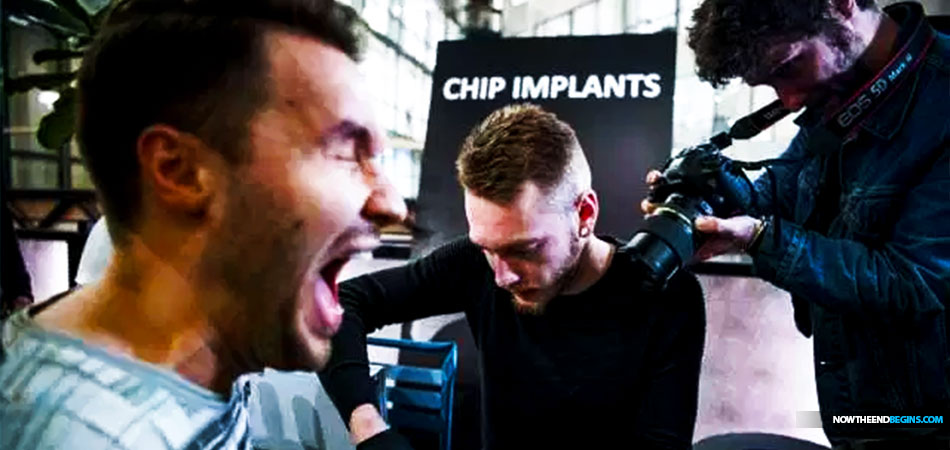
Thousands of people in Sweden have inserted microchips, which can function as contactless credit cards, key cards and even rail cards, into their bodies.
"And he causeth all, both small and great, rich and poor, free and bond, to receive a mark in their right hand, or in their foreheads: And that no man might buy or sell, save he that had the mark, or the name of the beast, or the number of his name. Here is wisdom. Let him that hath understanding count the number of the beast: for it is the number of a man; and his number is Six hundred threescore and six." Revelation 13:16-18 (KJV)
EDITOR'S NOTE: People in Sweden are not simply embracing human implantable NFC microchips, they are demanding access to the burgeoning technology by the thousands. Thanks to the plethora of mobile phone apps, NFC microchips in humans is an idea whose time has seem to have arrived. Of course, the King James Bible saw this coming 2,000 years ago.
Once the chip is underneath your skin, there is no longer any need to worry about
misplacing a card or carrying a heavy wallet. But for many people, the idea of carrying a microchip in their body feels more dystopian than practical.
Some have suggested that Sweden’s strong welfare state may be the cause of this recent trend. But actually, the factors behind why roughly 3,500 Swedes have had microchips implanted in them are more complex than you might expect. This phenomenon reflects Sweden’s unique biohacking scene. If you look underneath the surface, Sweden’s love affair with all things digital goes much deeper than these microchips.
The term biohackers refers to those amateur biologists who conduct experiments in biomedicine, but do so outside of traditional institutions – such as universities, medical companies and other scientifically controlled environments. Just as computer hackers hack computers, biohackers hack anything biological.
Biohacking is also a culture and a diverse one, with many different subgroups – all with different types of interests, goals and ideologies. But within this diversity there are two main groups: “wetware hackers” and transhumanists.
Wetware hackers are citizen science hobby biologists who build laboratory equipment from household utensils.
The other group are the transhumanists, who focus on enhancing and improving the human body – with the aim, in the long run, of improving the human race. Only through bettering ourselves – and escaping biological boundaries – will humans be able to compete with AI in the future.
Often, different biohacking scenes reflect the different societies and cultures in which they develop. So, for example, European biohackers generally
differ from their North American counterparts. North American groups are concerned with developing alternatives to the established healthcare practices. European groups, meanwhile, are more focused on finding ways of helping people in developing countries or engaging in a
rtistic bio-projects.
But Swedish biohacking culture actually differs from the rest of Europe.
Swedish biohackers are generally part of the transhumanist movement. And it is the transhumanists – or more specifically the subgroup “grinders” – who have been inserting NFC microchips somewhere between the thumb and the index finger of thousands of Swedes. These are the same microchips that have been used for decades to track animals and packages.
source
No comments:
Post a Comment